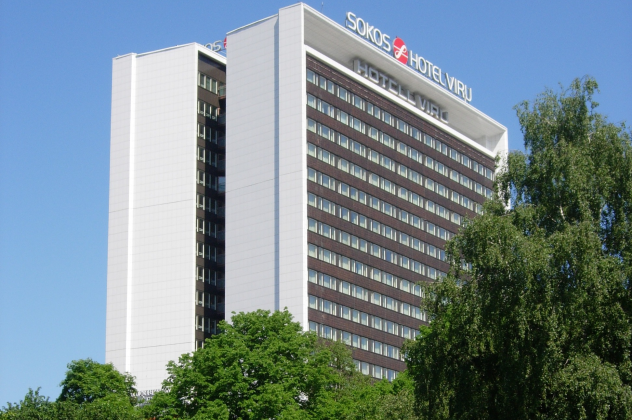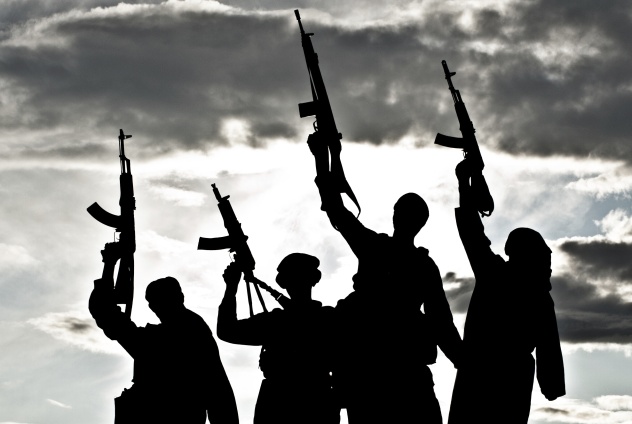 Music
Music  Music
Music  History
History 10 Less Than Jolly Events That Occurred on December 25
 Weird Stuff
Weird Stuff 10 Funny Ways That Researchers Overthink Christmas
 Politics
Politics 10 Political Scandals That Sent Crowds Into the Streets
 Weird Stuff
Weird Stuff Ten Bizarre Facts About The Doge Meme
 Our World
Our World 10 Ways Your Christmas Tree Is More Lit Than You Think
 Movies and TV
Movies and TV The 10 Coolest Stars to Set Sail on The Love Boat
 History
History 10 Things You Didn’t Know About the American National Anthem
 Technology
Technology Top 10 Everyday Tech Buzzwords That Hide a Darker Past
 Humans
Humans 10 Everyday Human Behaviors That Are Actually Survival Instincts
 Music
Music 10 Surprising Origin Stories of Your Favorite Holiday Songs
 History
History 10 Less Than Jolly Events That Occurred on December 25
 Weird Stuff
Weird Stuff 10 Funny Ways That Researchers Overthink Christmas
Who's Behind Listverse?

Jamie Frater
Head Editor
Jamie founded Listverse due to an insatiable desire to share fascinating, obscure, and bizarre facts. He has been a guest speaker on numerous national radio and television stations and is a five time published author.
More About Us Politics
Politics 10 Political Scandals That Sent Crowds Into the Streets
 Weird Stuff
Weird Stuff Ten Bizarre Facts About The Doge Meme
 Our World
Our World 10 Ways Your Christmas Tree Is More Lit Than You Think
 Movies and TV
Movies and TV The 10 Coolest Stars to Set Sail on The Love Boat
 History
History 10 Things You Didn’t Know About the American National Anthem
 Technology
Technology Top 10 Everyday Tech Buzzwords That Hide a Darker Past
 Humans
Humans 10 Everyday Human Behaviors That Are Actually Survival Instincts
10 Dastardly Secret Operations Of The KGB
Like the CIA, the Soviet (and now Russian) spy agency known as the KGB has engaged in decades of secret operations across the world, ranging from blackmail to kidnapping. Most of the secrets that we know about the KGB today are because of one man—Vasili Mitrokhin. Mitrokhin was an archivist for the KGB for 30 years before he defected to the UK and handed over his 25,000-page archive of secret KGB files. Here are some of the KGB’s most disturbing and outlandish secret operations.
10 Attacks On America’s Infrastructure

From 1959–72, the KGB began to photograph US power plants, dams, oil pipelines, and infrastructure for a nefarious operation that would disrupt the power supply to all of New York. Once they picked targets that they thought were vulnerable, the KGB set up a safe house near Harrisburg, Pennsylvania. From there, KGB agents sought to plan and carry out a series of attacks on America’s power systems.
Hydroelectric dams, which generate a significant portion of the US’s energy supply, were a target. The KGB formulated an elaborate plan to destroy two large hydroelectric dams, the Hungry Horse Dam and Flathead Dam, in Montana. Taking the two dams out of commission would cripple the power supply of the state and surrounding region. The attack was to begin 3 kilometers (2 mi) down the South Fork River from Hungry Horse Dam. The KGB planned to have operatives destroy power pylons on top of a tall mountain slope, which would be difficult to get back online, indefinitely knocking out power transmission from the dam. Then, the operatives were to seize the Hungry Horse Dam’s controls and destroy them. The attacks would have knocked out the power supply to all of New York state.
From the Soviet Union’s Canadian embassy, the KGB also planned to further disrupt America’s energy supply by attacking oil pipelines between Canada and the United States. The plot, called Operation Cedar, was planned for over a decade. The KGB even sought to destroy oil refineries in Canada, which supply a great deal of America’s gasoline.
All of the attacks on America’s power system were part of a larger scheme to attack New York City. Once they had knocked out most of the power in the United States with the earlier attacks, the KGB plotted to use the chaos and darkness to plant explosives on piers and warehouses along the Port of New York, a crucial harbor for America’s commerce and imports.
9 Hostage Crisis Retribution

In 1974, the KGB created an elite counterterrorism task force with the mysterious name “Alpha Group.” The Alpha Group was used by the KGB to carry out top secret and often dangerous missions for the USSR—and now Russia—including a bloody and vicious mission in Lebanon.
In 1985, the Soviet Union found itself with its first major hostage crisis after four Soviet diplomats were kidnapped in Lebanon by terrorists affiliated with an Islamic terrorist group. The kidnappers reportedly took the Soviets hostage to stop the USSR from giving support to Syria’s efforts in the Lebanese civil war, which the country was then embroiled in. After the Soviet diplomats were taken hostage, the kidnappers sent chilling photographs to news agencies of the hostages with guns to their heads. The terrorists demanded that the USSR force Syria-affiliated forces to stop attacking Iran-affiliated forces fighting in northern Lebanon, or the hostages would be executed.
Initially, the USSR was open to some form of negotiations with the terrorists to release the hostages unscathed. Things changed when the USSR didn’t seem to stop the Syrian forces’ involvement in the civil war, and the terrorists executed one of the hostages only two days after the initial demands were made.
That’s when the USSR abandoned negotiating, and the KGB took swift and bloody action. First, the KGB investigated what organization was behind the the kidnappings and found it to be the work of Hezbollah. That’s when the KGB did a bit of kidnapping of their own, snatching a close relative of a Hezbollah leader. They began to dismember him, castrating him and sending some of his dismembered body parts to the kidnappers of the Soviets. Soon after, the KGB killed the Hezbollah relative.
Then, the KGB sent the Hezbollah leader a message indicating that they knew of many more of his relatives and their whereabouts and warned that they would suffer the same fate if the hostages were not released. The Islamic terrorists holding the Soviets took notice and released the remaining three Soviet diplomats shortly after, entirely unscathed and without further demands.
8 Blackmail With Sex Tapes

The USSR had a plan for world domination. One country that the USSR sought to join their global communist rule was Indonesia. After the Indonesian Communist Party gained power with the help of President Sukarno, the USSR thought they would have an ally in the region. In order to ensure that Sukarno and Indonesia would remain allied with the Soviet Union, the KGB hatched a plan to get some dirt on Sukarno in case they needed to blackmail him to get their way.
Sukarno had one weakness that the KGB thought they could use to their advantage—a legendary sexual appetite. They drew up a plan to blackmail President Sukarno worthy of an Austin Powers movie. They found a group of attractive young women whom they thought could exploit President Sukarno’s voracious sexual appetite. The KGB then dressed the women as airplane stewardesses and sent them to Sukarno’s hotel while he was visiting Moscow.
As you can imagine, President Sukarno engaged in sex with multiple pseudo-stewardesses at once, while the KGB recorded the entire wild night. However, things didn’t go according to plan when they later brought the videotapes to Sukarno in an attempt to blackmail him. President Sukarno not only said that he didn’t care that the KGB had taped the sex or that they threatened to release it to the public, he asked for more copies for himself.
The KGB’s sexual blackmail did work elsewhere. In 1956, they successfully created a honeypot for French ambassador Maurice Dejean, consisting of attractive women called “swallows” by the KGB. One of these swallows was said to have been a Russian actress. While Dejean was having sex with the woman, her fictional husband furiously burst into the room to witness the act. This fake husband then threatened to bring the affair to public light and take legal action. The plan worked, and Dejean was pushed into becoming a KGB asset. He began feeding France’s secrets to the KGB in exchange for their keeping the affair secret from the public and his wife.
7 KGB Hacker Accesses 400 US Military Computers

In the 1980s, the KGB was looking for a way to steal US military secrets through two relatively new precursors to the Internet, ARPANET and MILNET. To do so, they found and recruited a man named Markus Hess, who would soon become a Soviet spy and one of the most legendary computer hackers in history.
Hess began his hacking mission from the University of Bremen in Germany, far away from the US military computers that he was trying to access. From there, Hess was able to attack 400 computers used by the US military. Some of the computers were used at bases around the world in places like Germany and Japan. Some of the other computers were used at MIT for research. Another was used by the Pentagon. Hess was able to guess the password to gain access to the Pentagon’s Optimis database, which allowed him to gain access to “a bibliography of Army documents.”
Hess’s widespread hacking operation remained undetected until a systems administrator and astronomer named Clifford Stoll began investigating a tiny accounting error in a California computer laboratory. Stoll found what seemed like a small, 75-cent error in the computer usage at Lawrence Berkeley Laboratory, which conducts scientific research for the US Department of Energy. Stoll tried to track down where the 75-cent discrepancy came from and traced it to an unauthorized and unknown user who had used the lab’s computer systems for nine seconds without paying. Stoll investigated further and found that this unauthorized user was a skilled hacker who gained access to a system administer “superuser” account by exploiting a security flaw in the system.
Stoll spent the next 10 months trying to track down the whereabouts of the hacker. Eventually, he was able to do so when the hacker tried to access a defense contractor in Virginia. Stoll began to record everything the hacker was doing. He witnessed this mysterious hacker accessing computer systems at military bases throughout the United States, searching for files regarding military secrets and nuclear weapons.
Stoll quickly contacted authorities ranging from the US military to the CIA, NSA, and FBI. Stoll and the authorities then traced the hacker’s physical whereabouts to a West German university. They set up a scam to get the hacker to reveal his full identity, inventing a fake department at the Lawrence Berkley Laboratory made to look like it was working with the US military. When the hacker took the bait and tried to access this fake department’s files, they were able to track him right to his house in Hannover, West Germany.
West German authorities, working with the US, then stormed Hess’s house and arrested him. Little did they all know that this elite hacker had been contracted by the KGB and was selling military secrets to the Soviet Union for years. Hess was later found guilty of espionage and sentenced to up to three years in prison but was released early on probation.
6 Operation RYAN

In 1980s, the Cold War reached another flash point. Then-leader of the USSR Leonid Brezhnev claimed to have knowledge that the US was actively preparing for a war against the Soviet Union and might launch a surprise nuclear attack at any time. So, in preparation for this supposed impending doom, the KGB sought to launch Operation RYAN, one of largest surveillance operations in history.
Operation RYAN was meant to provide the Soviets with early warning signs of an impending US nuclear attack. The plan was to conduct state-of-the-art surveillance using the USSR’s COSMOS satellite. The KGB wanted to photograph US military bases around the clock, monitoring them closely for signs that the US would launch nuclear weapons at the USSR.
The operation also sought to monitor all uses of radar within the United States for any dramatic increases that would indicate preparation for an attack. Furthermore, Operation RYAN was meant to monitor the activities of all American citizens and military personnel when they exited the US. RYAN also put NATO under heavy surveillance. The operation even tried to intercept telephone calls made throughout the United States and Europe.
In addition to remote surveillance, Operation RYAN created a network of spies who were ready to act on a moment’s notice if it was believed that the US was starting a war with the Soviet Union. The massive and costly operation was eventually scaled down in 1984, only three years after it was set into motion.
5 Buying US Banks

When the KGB wasn’t trying to use spies to get their hands on the secrets of the US government, they were trying to use banks.
In the mid-1970s, the KGB devised a plan to covertly buy three US banks in Northern California as part of a secret operation to acquire information on high-tech companies in the region. The three banks were chosen by the KGB because they had previously made loans to technology companies. Many of these companies were contracted by the US military, so the KGB hoped to capture US military technology secrets.
To pull the operation off, the KGB contracted a businessman from Singapore named Amos Dawe to purchase the banks for them without letting the US government get wind of the USSR’s grand plan to steal technology secrets. However, before the KGB could take over the banks, their purchase was thwarted by the CIA. The CIA had first learned of the scheme when they noticed that the Singaporean businessman’s money was coming from a Soviet bank. Dawe had obtained a $50 million credit line from a Singapore branch of Moscow’s Norodny Bank.
4 Operation PANDORA

Racial tensions were high in the US during the 1960s. Race riots surrounding the Civil Rights Movement were causing mass unrest across the country. The KGB thought that they could exploit this and make it worse by inducing animosity or outright violence between racial groups in the US.
The plan, called Operation PANDORA, began with the KGB spreading fake pamphlets that appeared to be from the Jewish Defense League, a right-wing Jewish political organization now classified by the FBI as a terrorist organization. The pamphlets, which were actually penned by the KGB, claimed that black Americans were attacking Jews and looting Jewish-owned shops in New York. The fake pamphlets implored their readers to fight against “black mongrels.” The KGB then sent these anti-black flyers to black militant groups, hoping it would stir anti-Semitism in the black organizations, if not outright violence.
Concurrently, the KGB was also sending fake letters to black militant groups which claimed that the Jewish Defense League had been targeting and attacking blacks in America. The letters implored the black militants to attack the Jewish Defense League in retaliation. The Jewish Defense League’s leader, Meir Kahane, was assassinated a year later, though the act was carried out by an Arabic man who was seemingly unconnected to any black militant groups.
As part of their operation to stir racial unrest, the KGB also planned to blow up a black college. After the college was bombed with a planted explosive device, the KGB planned to make anonymous calls to a series of black organizations and claim that the Jewish Defense league had been behind the bombing.
3 Trying To Kill Josip Broz Tito

Though he was a communist himself, Yugoslavia’s head of state Josip Broz Tito surprisingly attracted the ire of the Soviet Union and Joseph Stalin in particular. Seeking to make Yugoslavia more independent and self-reliant, Tito distanced himself from both the United States and the USSR in a bitter conflict known as the Tito-Stalin Split.
Because of this, Stalin wanted Tito to be assassinated and contracted the predecessor to the KGB, the MGB, to go through with it. The USSR’s best secret agent was assigned to carry out Tito’s assassination. He had previously assassinated another foe of Stalin’s—Leon Trotsky. Tito, however, miraculously survived the assassination attempts unscathed.
In response to the assassination plots, Tito sent a warning to Stalin: “Stop sending people to kill me. We’ve already captured five of them, one of them with a bomb and another with a rifle.” Tito also wrote to Stalin: “If you don’t stop sending killers, I’ll send one to Moscow and I won’t have to send a second.”
When the MGB’s more conventional assassination plots failed to kill Tito, they got fiendishly creative. They then tried to assassinate him with his own personal plague. They specially designed a deadly bacteria and planned to release the plague at a diplomatic reception that Tito would be attending. Everyone in the room would have been killed by the plague expect for the KGB agent who was administering it, as he would have been immunized beforehand.
The KGB also designed a poison jewel box to try to kill Tito. The box would have been given to Tito as a gift, a Trojan horse of sorts, and would emit a deadly gas that would kill anyone who opened it. Fortunately, both poison plans were never carried out, and Tito outlived Stalin by nearly 30 years, dying in 1980 at age 87.
2 The Listening Floor

During the Cold War, the KGB became very good at bugging buildings and listening in on conversations. In fact, they were so good at such eavesdropping that they once bugged an entire floor of a hotel with audio surveillance microphones . . . for 20 years.
In the early 1970s, tourism began to flourish in the Soviet satellite country of Estonia. The USSR saw it as an opportunity to bring money into the struggling economy, and the KGB saw it as an opportunity to spy on foreigners. In 1972, the KGB took over the top floor of Hotel Viru in Estonia and wired most of the hotel with sophisticated audio surveillance devices. The hotel was in an area that was frequently traveled by international businessmen.
Sixty rooms in the hotel were permanently wired with secret microphones, and other rooms could be bugged at a moment’s notice. On the outside, Hotel Viru appeared to have 22 floors. In truth, it had the secret 23rd floor, which housed KGB agents and the technology that they used to spy on all of the guests at the hotel. The KGB remained there for two decades, until the collapse of the Soviet Union put an end to the surveillance operation in 1991.
The KGB has been found to have been using incredibly sophisticated audio surveillance technology in buildings around the world. In 1945, a group of Soviet children presented the US ambassador to the USSR a gift, a carved wooden plaque of the Great Seal of the United States, as a show of friendship between the two countries. However, the plaque contained a secret microphone. In fact, this bug was one of the first audio surveillance devices to use passive technology to transmit audio signals, making it undetectable by traditional methods and allowing it to be used for an extended period of time.
The bugged plaque allowed the KGB to listen in on conversations in the American ambassador’s office for nearly seven years, until it was accidentally detected in 1952 by a British radio operator. The radio operator was confused when he heard conversations between Americans coming from a radio channel near the embassy. That radio channel was being used by the KGB to listen in on the private conversations.
1 Financing Terrorism

After Yasir Arafat rose to power at the head of the Palestine Liberation Organization (PLO), he established an alliance with the KGB. The KGB then began to provide secret training to the PLO’s militants, who were taking up arms to violently achieve Palestinian statehood. In addition to training, the KGB began to ship arms to the PLO guerrillas in spite of the embargo placed upon the Palestinian territories.
Around this time, the PLO was carrying out many acts of terrorism. In 1969 alone, they performed 82 airline hijackings around the world. The head of foreign intelligence for the KGB, Aleksandr Sakharovsky, claimed that “airplane hijacking is my own invention.”
The KGB also financed another Palestinian militant group, the Popular Front for the Liberation of Palestine (PLPF), supplying them with rocket launders and machine guns. A leader of the PLPF, Wadie Haddad, was revealed to be a KGB agent. While Haddad was in charge of the PLPF, he carried out multiple hijackings of civilian airplanes. One of those hijackings, the Dawson’s Field Hijackings of 1970, provoked what’s known as Black September in Jordan, a bloody civil war that lasted from September 1970 until July 1971.
The KGB purportedly gave 100 machine guns, automatic rifles, pistols, and ammunition to the Official Irish Republican Army (IRA) in 1972. The Irish paramilitary group ushered in some of the most ruthless acts of violence and terrorism in the Northern Irish conflict known as the Troubles. One reason that the KGB and USSR took such interest in the IRA was because they had turned Marxist and had begun to support turning Ireland into a communist state.
Nathan is a freelance journalist and screenwriter.







